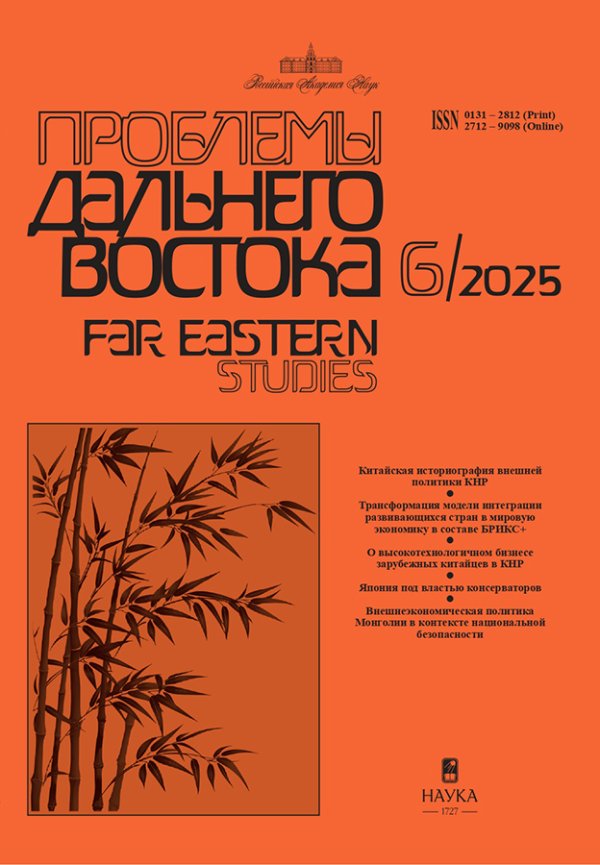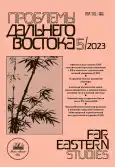Asian Space Race: New Priorities for Industrial Development of Solar System Bodies
- Authors: Blokhina T.K.1, Myslyaeva I.N.1, Fesyanova O.A.2, Moshaev I.A.1, Pavlov I.A.3
-
Affiliations:
- Lomonosov Moscow State University
- Lomonosov Moscow State University, Faculty of Space Research
- M. V. Lomonosov Moscow State University
- Issue: No 5 (2023)
- Pages: 65-77
- Section: Articles
- URL: https://journals.rcsi.science/0131-2812/article/view/251201
- DOI: https://doi.org/10.31857/S013128120027584-3
- ID: 251201
Full Text
Abstract
About the authors
Tatiana Konstantinovna Blokhina
Lomonosov Moscow State University
ORCID iD: 0000-0002-7099-0631
52, Leninskie gory, Moscow, 119991, Russian Federation
Irina Nikolaevna Myslyaeva
Lomonosov Moscow State University
ORCID iD: 0009-0005-7812-5887
Vinnitskay 3-41
Oxana Alekseevna Fesyanova
Lomonosov Moscow State University, Faculty of Space Research
ORCID iD: 0009-0008-9634-0216
Leninskie Gory, 1 b.52
Ilarion Aleksandrovich Moshaev
Lomonosov Moscow State University
ORCID iD: 0009-0000-0487-5902
Russian Federation
Ilya Anatol'evich Pavlov
M. V. Lomonosov Moscow State University
ORCID iD: 0009-0007-9501-5043
Moscow, Zapadniy Administrative Okrug, Ramenki District, Leninskiye Gory Microdistrict, building 1с52, 8th floor
References
- Григорьев М.Н., Охочинский М.Н. Космическая деятельность в Азиатско-Тихоокеанском регионе и аэрокосмическая промышленность России // Инновации. 2015. № 10(204). С. 75–80.
- Добыча космических ресурсов: оценка возможностей и перспектив добычи ресурсов вне Земли / под ред. И.Н. Мысляевой, М.Р. Ахмедова. М.: КУРС, 2022. С. 1 4–17.
- Договор о принципах деятельности государств по исследованию и использованию космического пространства, включая Луну и другие небесные тела // ООН. URL: https://www.un.org/ru/documents/decl_conv/conventions/outer_space_governing.shtml
- (дата обращения: 27.07.2023).
- Железняков А.Б., Кораблев В.В. Опыт освоения космоса Китайской Народной Республикой // Глобальная энергия. 2012. № 2–2(147). С. 13–21.
- Зеленый Л., Шевченко В. Клондайк на поверхности. Без лунных ресурсов человечество может столкнуться с ограничениями в своем развитии // Русский космос. 2021. № 33. С. 26–28.
- Картотека: добыча ископаемых в космосе. Освоение внеземных недр. М.: ВШЭ, 2023 // IQ.HSE. URL: https://iq.hse.ru/news/220072259.html (дата обращения: 24.07.2023).
- Китай обнародовал план будущих исследований дальнего космоса // Синьхуа. 26.04.2023. URL: https://russian.news.cn/20230426/a624ff7de5e940c98a515bc9e745af0c/c.html (дата обращения: 24.07.2023).
- Отчет об инвестициях в коммерческую аэрокосмическую промышленность Китая за 2018 г. М.: Институт аэрокосмических исследований будущего, 2018. 24 с.
- China’s Space Program: A 2021 Perspective // China Aerospace Science and Technology Corporation. URL:
- https://www.cnsa.gov.cn/english/n6465652/n6465653/c6813088/content.html (дата обращения: 11.08.2023).










